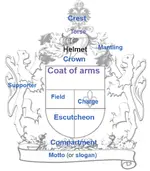wayfas4u
Sr. Member
- Mar 29, 2010
- 441
- 633
- Detector(s) used
- Minelab CTX 3030, Garrett 2500 GTI, Garrett AT Pro & AT Max
- Primary Interest:
- All Treasure Hunting
Dug at late 1700’s site near Parker’s Ferry SC. Made out of brass and measures 35 mm. Diameter. Who is the person male or female? Would like to know the history of this button.









